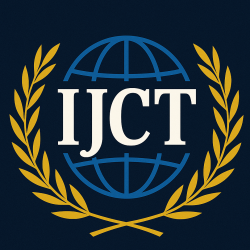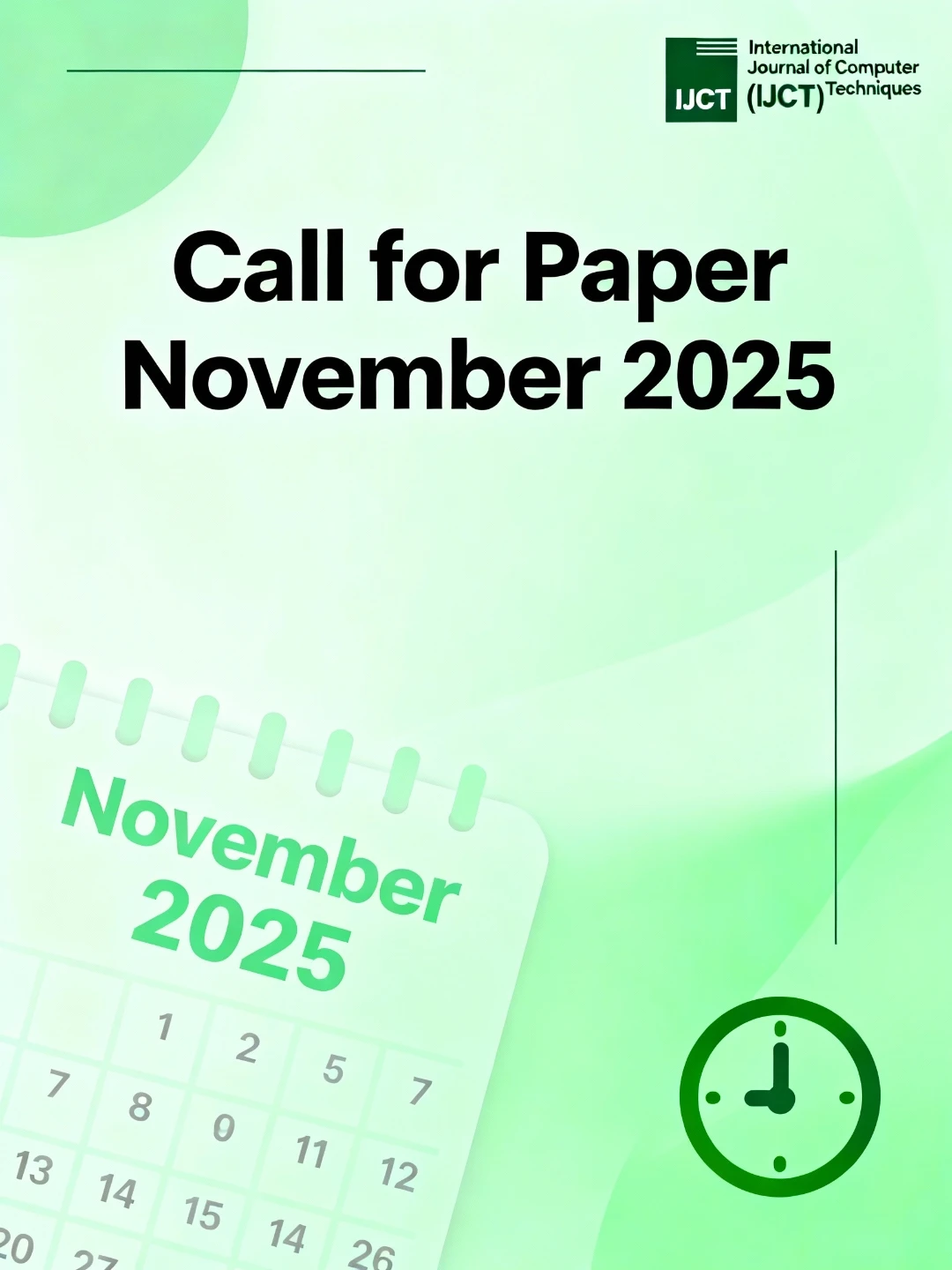
Challenges and Opportunities in Implementing Agile-Based Software Quality Assurance Frameworks for Electronic Health Records in U.S. Hospitals – Volume 12 Issue 5

International Journal of Computer Techniques
ISSN 2394-2231
Volume 12, Issue 5 | Published: September – October 2025
Author
Oyindamola Adebayo
Table of Contents
ToggleAbstract
The introduction of electronic health records (EHRs) into American hospitals has fundamentally changed the way healthcare is provided, yet remains prone to numerous issues concerning usability, interoperability, compliance and patient safety. Conventional software quality assurance (QA) methods are frequently unable to keep up with the complexity and dynamism of healthcare IT settings. Other frameworks based on agile QA have been proposed, which focus on a more iterative method to testing, collaboration between clinicians and developers, and constant improvement. This paper examines the issues and opportunities of applying the agile QA practices to the EHR systems of the U.S. hospitals. The systematic review of recent publications in the years 2020-2023 allows synthesizing the findings about the challenges, including regulatory restrictions, resource constraints, and cultural resistance, and opportunities, including increased adaptability, greater user feedback integration, and shorter deployment timeframes. As the analysis shows, agile QA has potential to resolve the long-term challenges in EHR quality and safety, but its implementation needs to be in line with the needs and requirements of the U.S. healthcare environment, organizational culture, and patient safety. The paper emphasizes with a conclusion and recommendations to support the introduction of the agile-based QA in hospitals by the healthcare provider, policymakers, and researchers.
Keywords
Agile Software Quality Assurance, Electronic Health Records (EHRs), Patient Safety, Healthcare IT, U.S. HospitalsConclusion
This paper has discussed the issues and opportunities of implementing agile-based software quality assurance (SQA) model on electronic health record (EHR) systems at U.S. hospitals. The results reveal the two-sided reality of healthcare organizations, where regulatory complexity, organizational resistance, financial pressures, and burnout of clinicians are both a major challenge, but agile approaches may also provide potent instruments to enhance patient safety, optimize collaboration, and permit technological innovation. Agile models offer agility and flexibility uncommon in traditional linear models. With our recurring focus on developing the product through iterative development, feedback, and collaboration, the stakeholder, agile-based SQA can assist U.S. hospitals to be more responsive to the changing needs of healthcare IT. Notably, the combination of agile practices is consistent with more general objectives of patient-centered care, enhanced usability of EHR systems, and the formation of a more robust patient safety culture (Azyabi et al., 2021; Huang et al., 2022). The consequences to healthcare organizations are obvious: the implementation of agile SQA needs not only technical changes but also organizational and cultural change. The hospitals should establish a culture of inclusion of clinicians, make investments in training, and align with the regulatory demands. On the policy level, regulators and funding agencies must promote the idea of innovation by considering agile frameworks as a legitimate and compliant practice and providing resource-constrained hospitals with the encouragement to adopt agile frameworks. Going ahead, additional empirical studies are required to validate the effectiveness of agile SQA in the real world in terms of reducing costs, enhancing patient safety outcomes, and enhancing clinician satisfaction. A combination of agile flexibility and regulatory rigor could be a possible way forward in hybrid models. Moreover, agile SQA can be used to introduce the emerging technologies in EHR introductions, as artificial intelligence, IoT, and blockchain are exciting innovations with their potential (Lee et al., 2024; Niu et al., 2024).
References
1.Alexandre, P. K., Monestime, J. P., & Alexandre, K. (2024). The impact of county-level factors on meaningful use of electronic health records (EHRs) among primary care providers. PLoS ONE, 19(1 January). https://doi.org/10.1371/journal.pone.0295435 2.Azyabi, A., Karwowski, W., & Davahli, M. R. (2021, March 1). Assessing patient safety culture in hospital settings. International Journal of Environmental Research and Public Health. MDPI AG. https://doi.org/10.3390/ijerph18052466 3.Cross, D. A., Holmgren, A. J., & Apathy, N. C. (2024). The role of organizations in shaping physician use of electronic health records. Health Services Research, 59(1). https://doi.org/10.1111/1475-6773.14203 4.Garcia, C. D. L., De Abreu, L. C., Ramos, J. L. S., De Castro, C. F. D., Smiderle, F. R. N., Dos Santos, J. A., & Bezerra, I. M. P. (2019, September 1). Influence of burnout on patient safety: systematic review and meta-analysis. Medicina (Lithuania). MDPI AG. https://doi.org/10.3390/medicina55090553 5.Giachetti, G., de la Vara, J. L., & Marín, B. (2024). Model-driven gap analysis for the fulfillment of quality standards in software development processes. Software Quality Journal, 32(1), 255–282. https://doi.org/10.1007/s11219-023-09649-x 6.Hidalgo, M., Astudillo, H., & Castro, L. M. (2024). Challenges to Use Role Playing in Software Engineering Education: A Rapid Review. In Communications in Computer and Information Science (Vol. 1874 CCIS, pp. 245–260). Springer Science and Business Media Deutschland GmbH. https://doi.org/10.1007/978-3-031-46813-1_17 7.Huang, H., Xiao, L., Chen, Z., Cao, S., Zheng, S., Zhao, Q., & Xiao, M. (2022). A National Study of Patient Safety Culture and Patient Safety Goal in Chinese Hospitals. Journal of Patient Safety, 18(8), E1167–E1173. https://doi.org/10.1097/PTS.0000000000001045 8.Hwang, J. I., Kim, S. W., & Chin, H. J. (2019). Patient Participation in Patient Safety and Its Relationships with Nurses’ Patient-Centered Care Competency, Teamwork, and Safety Climate. Asian Nursing Research, 13(2), 130–136. https://doi.org/10.1016/j.anr.2019.03.001 9.Lee, S., Kim, Y., & Cho, S. (2024). Searchable Blockchain-Based Healthcare Information Exchange System to Enhance Privacy Preserving and Data Usability. Sensors, 24(5). https://doi.org/10.3390/s24051582 10.Li, C., Wang, J., Wang, S., & Zhang, Y. (2024). A review of IoT applications in healthcare. Neurocomputing, 565. https://doi.org/10.1016/j.neucom.2023.127017 11.Li, J., Dada, A., Puladi, B., Kleesiek, J., & Egger, J. (2024, March 1). ChatGPT in healthcare: A taxonomy and systematic review. Computer Methods and Programs in Biomedicine. Elsevier Ireland Ltd. https://doi.org/10.1016/j.cmpb.2024.108013 12.Liu, C., Chen, H., Cao, X., Sun, Y., Liu, C. Y., Wu, K., … Chiou, W. K. (2022). Effects of Mindfulness Meditation on Doctors’ Mindfulness, Patient Safety Culture, Patient Safety Competency and Adverse Event. International Journal of Environmental Research and Public Health, 19(6). https://doi.org/10.3390/ijerph19063282 13.Natarajan, T., & Pichai, S. (2024). Behaviour-driven development and metrics framework for enhanced agile practices in scrum teams. Information and Software Technology, 170. https://doi.org/10.1016/j.infsof.2024.107435 14.Nikpay, S., Carroll, C., Golberstein, E., & Abraham, J. M. (2024). Playing by the Rules? Tracking U.S. Hospitals’ Responses to Federal Price Transparency Regulation. Journal of Healthcare Management, 69(1), 45–58. https://doi.org/10.1097/JHM-D-23-00014 15.Niu, H., Omitaomu, O. A., Langston, M. A., Olama, M., Ozmen, O., Klasky, H. B., … Nebeker, J. (2024). EHR-BERT: A BERT-based model for effective anomaly detection in electronic health records. Journal of Biomedical Informatics, 150. https://doi.org/10.1016/j.jbi.2024.104605 16.Parker, E. D., Lin, J., Mahoney, T., Ume, N., Yang, G., Gabbay, R. A., … Bannuru, R. R. (2024). Economic costs of diabetes in the u.S. in 2022. Diabetes Care, 47(1), 26–43. https://doi.org/10.2337/dci23-0085 17.Pizzini, M., & Vansant, B. (2024). Monopsony Power and Cost Structure: Evidence from the U.S. Hospital Industry. Journal of Management Accounting Research, 36(2), 157–177. https://doi.org/10.2308/JMAR-2022-078 18.Prianes, F., & Palaoag, T. (2024). Modeling document labels using Latent Dirichlet allocation for archived documents in Integrated Quality Assurance System (IQAS). F1000Research, 12, 105. https://doi.org/10.12688/f1000research.130245.2 19.Rangel, J. C., & Humphrey-Murto, S. (2024). Social Studies of Science and Technology: New ways to illuminate challenges in training for health information technologies utilisation. Medical Education, 58(1), 27–35. https://doi.org/10.1111/medu.15179 20.Silvera-Tawil, D. (2024). Robotics in Healthcare: A Survey. SN Computer Science, 5(1). https://doi.org/10.1007/s42979-023-02551-0 21.Tartaglia, A., White, K. B., Corson, T., Charlescraft, A., Johnson, T., Jackson-Jordan, E., & Fitchett, G. (2024). Supporting staff: The role of health care chaplains. Journal of Health Care Chaplaincy, 30(1), 60–73. https://doi.org/10.1080/08854726.2022.2154107 22.Tong, L., Shi, W., Isgut, M., Zhong, Y., Lais, P., Gloster, L., … Wang, M. D. (2024). Integrating Multi-Omics Data With EHR for Precision Medicine Using Advanced Artificial Intelligence. IEEE Reviews in Biomedical Engineering, 17, 80–97. https://doi.org/10.1109/RBME.2023.3324264 23.Tung, E. L., Bruch, J. D., Chin, M. H., Menconi, M., Peek, M. E., & Huang, E. S. (2024). Associations of U.S. hospital closure (2007-2018) with area socioeconomic disadvantage and racial/ethnic composition. Annals of Epidemiology, 92, 40–46. https://doi.org/10.1016/j.annepidem.2024.02.010 24.Ueda, D., Kakinuma, T., Fujita, S., Kamagata, K., Fushimi, Y., Ito, R., … Naganawa, S. (2024, January 1). Fairness of artificial intelligence in healthcare: review and recommendations. Japanese Journal of Radiology. Springer. https://doi.org/10.1007/s11604-023-01474-3 Zhou, B., Yang, G., Shi, Z., & Ma, S. (2024). Natural Language Processing for Smart Healthcare. IEEE Reviews in Biomedical Engineering, 17, 4–18. https://doi.org/10.1109/RBME.2022.3210270
IJCT Important Links
© 2025 International Journal of Computer Techniques (IJCT).










